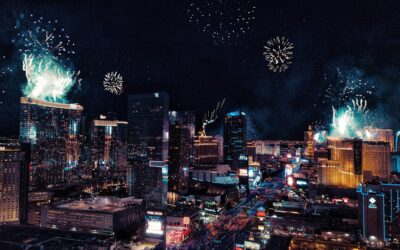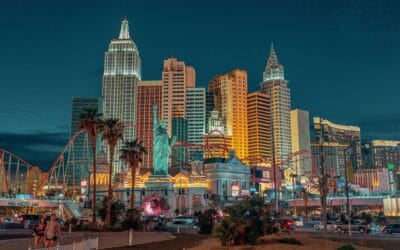Iceland is a volcanic island that offers a unique array of natural beauty. With two-thirds of the population living in Reykjavík alone, much of the island has been untouched by humans. You don’t have to travel far to immerse yourself in Iceland’s most famous natural attractions, with The Golden Circle, a 151-mile (243 km) route, that begins and ends in the capital of Reykjavík.
 Hallgrímskirkja Church in Reykjavík, a good starting point for The Golden Circle
Hallgrímskirkja Church in Reykjavík, a good starting point for The Golden Circle
I visited Iceland in March on an Icelandair Stopover on my way back from Europe which gave me 28 hours to explore the country at no extra cost. I rented a car for 66 USD at the Keflavik airport and made my way to the city of Reykjavík, a short 42-minute drive, where I stayed at Gestinn Guesthouse. This B&B cost 125 USD for the night and included breakfast for two. To me, these expenses alone have completely debunked the notion that visiting Iceland will break the bank.
Over the night, a strong wind and snowstorm came through, blanketing the city in snow. While eating breakfast, I heard the B&B owner telling a couple that their tour for the day would not happen because of the weather and the road closures. Nervously, I checked the status of all the roads for The Golden Circle. All were clear! Just before leaving, the piece of advice the host gave me was if the car started picking up off the ground because of the wind, to pull over and wait it out. Along with this, I was told not to drive next to the ocean as the wind could pick up the car and toss it into the water. I had never heard anything like this, my jaw dropped. My lesson learned here is Icelanders do not play with the weather!
The Golden Circle Route:
Kerid Crater (Kerið)
 Kerid Crater (Kerið)
Kerid Crater (Kerið)
The first stop on The Golden Circle is Kerid Crater which geologists believe was formed from a collapsed magma chamber at the end of a volcanic eruption roughly 6,000 years ago. The crater is 150 ft (46 m) deep!
Admission: 400 ISK (About 3 USD Per Person). Admission fees go towards the upkeep and restoration of this site.
Gullfoss Waterfall
 Gullfoss Waterfall
Gullfoss Waterfall
In Icelandic, Gullfoss means “Golden Waterfall.” This name was given because the water takes on a golden-brown color, especially on sunny days. Glacial water carries lots of sediments that create this coloration.
The two-tiered waterfall has a total cumulative height of 105 feet (32 m) and is the largest waterfall by volume in Europe, with the average flow being nearly 370,000 gal/s (1400 m³/s) in the summertime.
It was so windy the day I visited that you could fall back and the wind would hold you up!
Admission: Free
 Strokkur Geyser (Geysir)
Strokkur Geyser (Geysir)
Strokkur is in the Geyser Geothermal Area and is the greatest active geyser at this location. It is named after the Great Geyser that is currently in a period of inactivity. Strokkur erupts more regularly than the Great Geyser ever did, blasting water 50-66 ft (15-20 m) every five to ten minutes.
Active geysers like Strokkur are rare in the world because so many conditions must be met for them to form – the first being an intense heat source; magma must be close enough to the surface of the earth for the rocks to be hot enough to boil water. Second, a source of underground water flowing, which, in the case of Strokkur, comes from the second largest glacier in the country, Langjökull. And third, a complex plumbing system that allows for an eruption rather than steam from the ground like a fumarole.
Admission: Free
Öxarárfoss Waterfall at Thingvellir National Park (Þingvellir)
 Öxarárfoss Waterfall at Thingvellir National Park (Þingvellir)
Öxarárfoss Waterfall at Thingvellir National Park (Þingvellir)
Öxarárfoss is a waterfall situated within Thingvellir National Park in southwest Iceland. Thingvellir was the original site of the Alþing, the Icelandic parliament founded in 930 AD. This parliament continues to exist in Reykjavík but for nine centuries flourished here. Icelanders would meet here annually to pass laws, settle disputes, and share news. Iceland was incredibly progressive, giving a voice to all people and granting women divorces long before many other nations considered it. The site also hosted many battles and the prosecution of dozens of witches.
Admission: Free
Icelandic Horses (íslenski hesturinn)
 Icelandic Horses (íslenski hesturinn)
Icelandic Horses (íslenski hesturinn)
Along The Golden Circle route are opportunities to see and pet the famous Icelandic horses who were brought to Iceland by the Vikings in the 8th century. These horses have heavy double-layer coats that protect them from the harsh Icelandic weather. They are only 12-14 hands high (4-5 ft tall) and weigh 600-900 pounds.
If an Icelandic horse leaves Iceland, it can never return, with no exceptions given for even the best equestrians. The best horses are therefore kept in Iceland to compete domestically or breed. Icelandic horses have been purebred for over 1000 years and have remarkably few livestock diseases because of this. If you drive by any on your Golden Circle route, be sure to pull over and give these friendly horses some love!
Need To Know
Where to stay? Reykjavík is the starting point for this route. Consider a hotel or B&B in the city or close by.
Should I buy a tour for The Golden Circle? In my opinion, it is entirely unnecessary to purchase a tour. If you have a car rental and are comfortable with the possibility of having to drive in the snow, then you will not have a problem navigating to these sites. You can also go at your own pace and not have the time limit of a tour.
How long will The Golden Circle take? Plan to spend the entire day on this route.
Are there any other stops along this route? Detours on The Golden Circle include:
Silfra: diving between the North American and European tectonic plates. This rift formed naturally in 1789 by earthquakes and is currently the only place in the world where you can dive between two tectonic plates. Snorkeling and diving tours run about 129 USD to 255 USD and up per person.
Skálholt: a Cathedral that is one of the most historical places in Iceland, dating back to 1056. Admission is free.
Fridheimar Farm: a family-run restaurant with dishes made with ingredients from onsite greenhouses. Lunch prices range from 16-32 USD. The farm also showcases Icelandic horses.
Secret Lagoon: the oldest swimming pool in Iceland, dating from 1891. Adult admission starts at 22 USD.
Thjorsardalur (Þjórsárdalur): a beautiful valley which features and waterfall and Iceland’s longest river, Þjórsá. The waterfall, Háifoss, is 400 ft tall (122 m). Admission is free.
Hvítá: a glacier river that is popular for rafting. The river leads to Gullfoss Waterfall. Rafting excursions cost upwards of 110 USD per person.
Langjokull Glacier: the second-largest glacier in Iceland at 361 square miles (935 square km). Snowmobiling tours are popular at this location and cost upwards of 188 USD per person.
Other tips: Verify if any of the stops on your list require 4-wheel drive on your rental car (Kerid Crater, Gullfoss Waterfall, Strokkur Geyser, and Oxararfoss Waterfall do not require 4-wheel drive), bring a good windbreaker, and fill up on gas before leaving Reykjavík.
Map of Stops
myVEGAS Rewards Comp Calendars (August- December 2025)
Check out the 2025 myVegas Hotel Comp Calendars for Mandalay Bay, Luxor, Park MGM, MGM Grand, Excalibur, and New York New York, Bellagio, and Aria
Access to 360+ Gardens Across North America: American Horticultural Society Membership (2025)
Discover the wonders of nature through the American Horticultural Society’s (AHS) Reciprocal Admissions Program Membership, offering exclusive access to a remarkable network of over 360 gardens across North America, including 317 paid gardens with complimentary entry.
myVEGAS Rewards Comp Calendars (January – July 2025)
Check out the 2025 January – July myVegas Hotel Comp Calendars for Mandalay Bay, Luxor, Park MGM, MGM Grand, Excalibur, and New York New York, Bellagio, and Aria





This looks beautiful. I’m from Canada, it has similarities
I loved the Golden Circle in Iceland, so beautiful!
That is so beautiful! You are making me start planning to visit Iceland. Thank you so much!
Looks amazing! The waterfalls and geyser are calling my name. Hoping to travel to Iceland one day. I also love your post about the ice caves!
I Will have to visit again whenever my course load lets up however I am taking your Rss feed so i can read your web blog offline. Thanks.